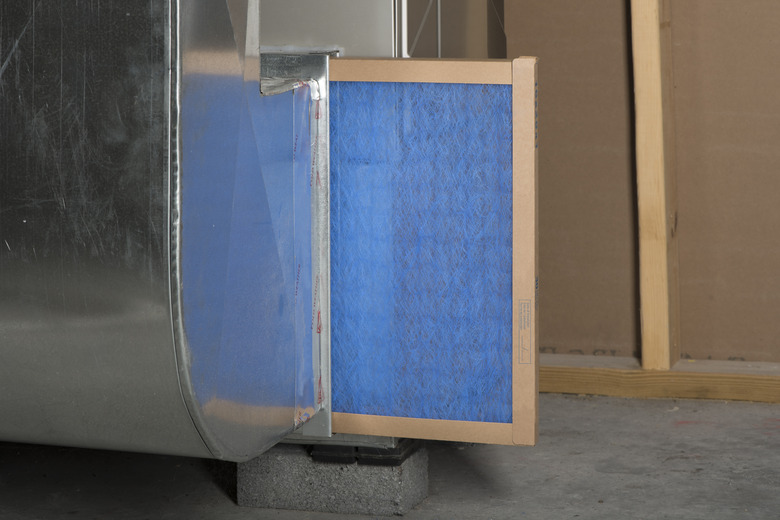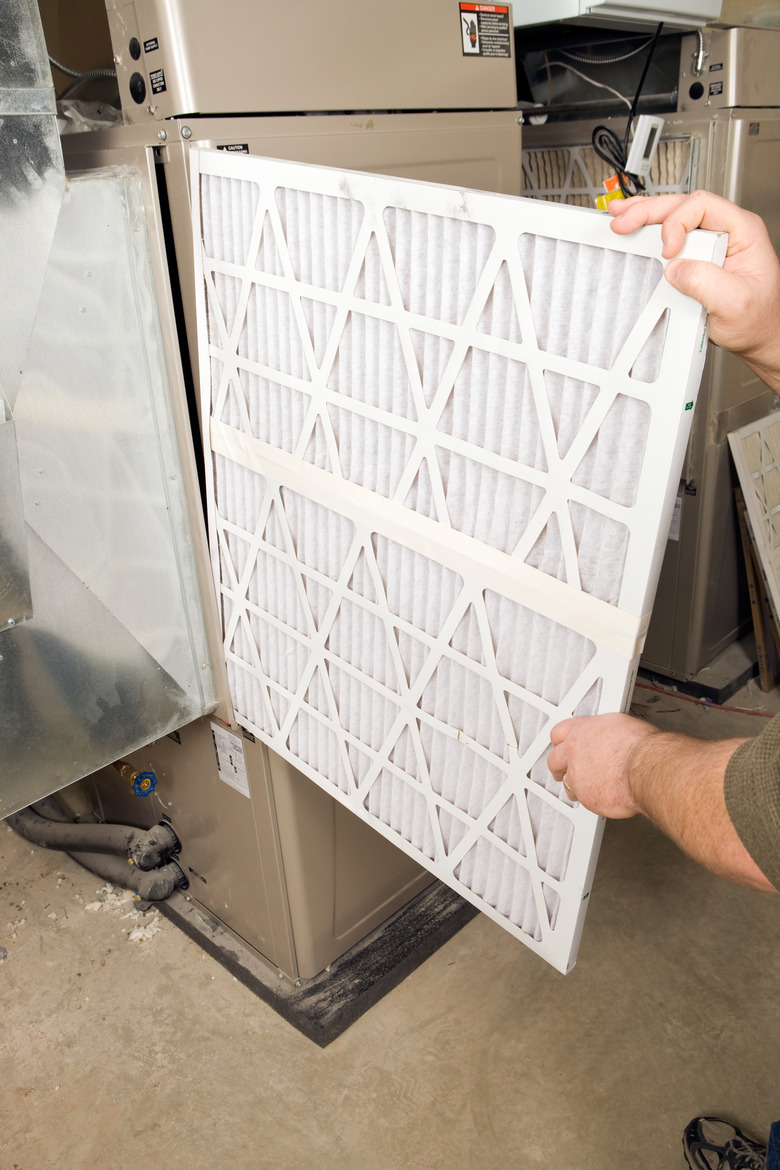When You Should Change Your Furnace Filter — And How
We may receive a commission on purchases made from links.
Furnace filters need to be changed on a regular basis to prolong the life of the furnace and protect your respiratory health. Once you know where the filter is located and how to change it, this job takes just a few minutes to complete.
Why Change a Furnace Filter?
Why Change a Furnace Filter?
Furnace filters serve two purposes: to prevent dust, dirt, dander and other contaminants and allergens from entering the furnace and to improve your home's indoor air quality. When the filter becomes too dirty, its performance diminishes. Dust and debris may get pulled into the furnace, where it can settle into the motor, fan or heat exchanger or circulate back into your home. That's why it's especially important to regularly replace your furnace filter if you suffer from allergies or any other respiratory illness.
A dirty furnace filter can also shorten the life span of your furnace, decrease its efficiency and increase your energy bills. Because air cannot easily pass through a dirty filter, the motor has to work extra hard to pull air from the return duct. Dirt that enters the furnace can also reduce efficiency by creating friction between the moving parts inside the furnace, which causes damage over time. A clean filter may also solve whining or whistling problems emanating from the furnace or registers.
When to Change a Furnace Filter
When to Change a Furnace Filter
Filter manufacturers may market their products by claiming the filter will last a certain amount of time. In reality, a filter's life span depends on the number of people in your household, how many pets you have and whether you tend to track in a lot of dirt from the outdoors. For example, a family of five living with two dogs will produce more dust than a single person without any pets, and that family will need to change their furnace filter more often as a result.
A single person may be able to change the filter just once per year, but a larger family should check the filter every three months. Some households may require monthly changes. There are no strict rules; you just have to check the filter periodically and develop your own schedule.
How to Locate a Furnace Filter
How to Locate a Furnace Filter
Start by locating the furnace in your home, basement or garage. With the HVAC system turned off, open the door on the furnace. If there's more than one door, open the lowest one. If you're lucky, you'll see a filter right in front of you. Mystery solved!
If you're having trouble finding the filter, locate the duct that attaches to the bottom of the furnace. Look for a compartment between this duct and the furnace. It might have a door that swings open or pulls off, revealing a filter. In some cases, the filter will be much larger than you think, so don't hesitate to poke around and open any doors to peek inside.
If you don't find a filter here, you'll need to look behind the return duct registers in your home. These tend to be larger than the supply registers and may be located on the wall, ceiling or even the floor. Being mindful of sharp edges on metal registers, pull open the tabs to unlock the register and swing it away from the frame. The filter will be tucked just inside. Check every return register in your home, even if you already found a filter near your furnace.
How to Purchase a Replacement Filter
How to Purchase a Replacement Filter
Replacement filters have to be the same design (flat versus accordion, for example) and the same dimensions as the existing filter. Other than that, you can select filters with different performance capabilities, such as pleated versus flat designs or various minimum efficiency reporting value (MERV) ratings. If you have no complaints about poor indoor air quality or whistling noises emanating from the filter, you should be in the clear to order the exact same type of filter as the old one. Look for a model number on the filter to help you purchase a replacement.
If you have concerns about indoor air quality, look for filters with higher MERV ratings. The MERV rating scale runs from five to 13 for household filters, with the highest numbers awarded to filters that trap the smallest dust particles and therefore provide the cleanest air supply. If the filter makes high-pitched noises, look for a filter that provides better airflow. For example, a filter with larger pleats will offer less resistance than a filter with smaller, densely packed pleats.
Environmentally conscious homeowners may be interested in purchasing a reusable electrostatic filter, which is designed to be periodically rinsed with a hose and reinstalled. If you're not sure what's best for your heating system, don't hesitate to call an HVAC pro to evaluate your filter and advise you on what type to purchase in the future.
How to Install a Flat Filter
How to Install a Flat Filter
A flat filter typically has a cardboard frame. It's designed to slide into a special compartment in the furnace or to fit tightly behind the return registers. Installation is pretty easy, but you do need to take care not to insert the filter backward. Look on the side of the filter for an arrow, which shows the direction of the airflow. The arrow should point toward the furnace. Return air flows from the house and into the bottom of the furnace; the filter arrow should point in the same direction.
With the filter facing the correct direction, slide it into the compartment by the furnace or push it into the duct just far enough for the register to close. If your furnace's filter compartment does not have a door, consider taping over it with HVAC tape or purchasing a door to prevent air from escaping, which will reduce the unit's efficiency.
How to Install an Accordion Filter Insert
How to Install an Accordion Filter Insert
If you located your furnace filter and pulled out a thick plastic frame instead of a flimsy, flat cardboard filter, you have an accordion-style filter. Sometimes, you can slide the top and bottom into grooves within the compartment. Otherwise, you'll need to stretch it across the frame before reinstalling it.
Lay the plastic frame flat with the long edges of the pleat spacers facing up. Pull the tabs that hold the plastic sides in place to allow them to fold down. Pop the pleat spacers out of the frame and set them aside. Locate the long plastic lips or flaps that secure the edge of the fabric to the other two plastic sides and flip these upward. Finally, lift up the filter fabric at every corner to free it from the shallow plastic hooks holding it in place. The old filter fabric should now lift out.
To install the new fabric, start by hooking each corner over those plastic hooks. Then, fold down the long clips over the edges of the fabric until they click into place. Here comes the time-consuming part: The pleat spacers need to fit between every single pleat of the fabric. Start in the middle. Once you get one set up perfectly, insert the others right beside it and pull it to the side to "comb" the fabric until the spacer is in position. Push down on the spacers to make sure they click into place. Finally, fold up the other two sides of the frame and secure the tabs. The filter can now be returned to its compartment.

